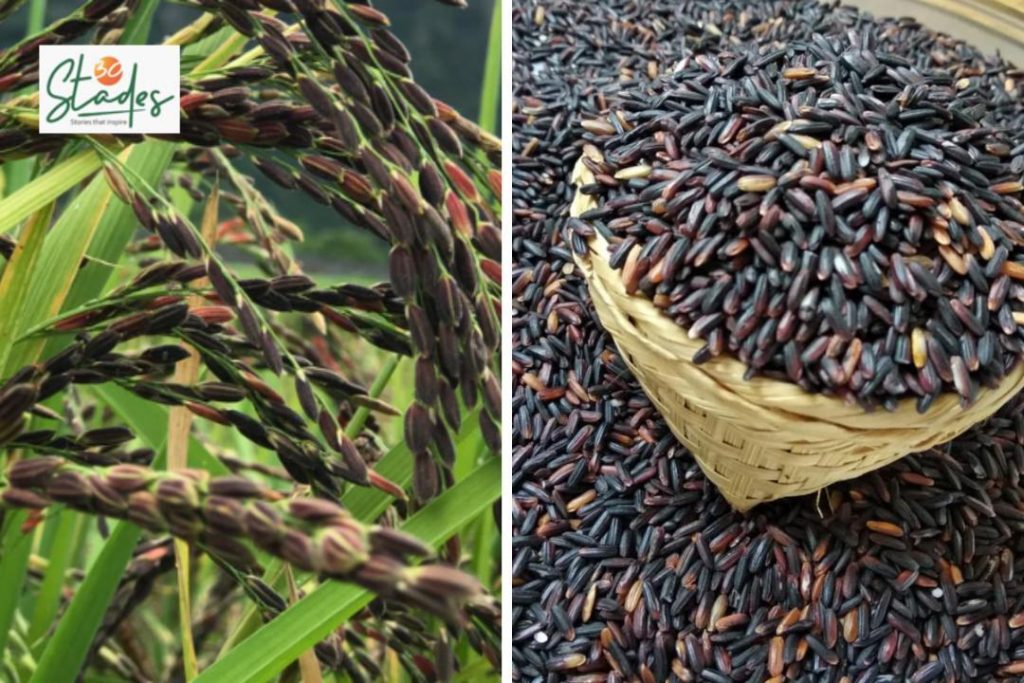
How Manipur’s Black Rice Chakhao Moved from Palaces to the World
Manipur’s black rice, Chakhao, has been a prized possession for centuries. Once grown exclusively for kings and hidden in sacred rituals, this GI-tagged rice has finally broken free from its royal and religious confines to gain international recognition as a superfood. Its exclusivity earned it the nickname “forbidden rice,” as it was restricted to royal and religious use only. But now, with its rich purple hue and unique aroma, Chakhao is being exported to the USA, UK, and Japan, leaving a trail of culinary enthusiasts in its wake.
The journey of Chakhao from the royal kitchens to global shelves is a remarkable one. This heirloom rice variety has been cultivated in Manipur, a state in northeastern India, for centuries. Its unique characteristics, such as its deep purple color and nutty flavor, set it apart from other rice varieties. Traditionally, Chakhao was grown only in the valley of Manipur, where it was used as an offering to the gods and as a special treat for the royal family.
However, in recent years, the demand for Chakhao has increased exponentially, driven by its growing reputation as a superfood. With its high nutritional value, rich antioxidant content, and potential health benefits, Chakhao has become a sought-after ingredient in modern cuisine. The rice is now being exported to countries around the world, where it is being used in high-end restaurants, specialty stores, and even in some of the world’s top hotels.
The rise of Chakhao as a global superfood can be attributed to a combination of factors. One of the main reasons is its unique nutritional profile. Chakhao contains a high amount of antioxidants, which help to protect the body against free radicals and oxidative stress. It is also rich in fiber, vitamins, and minerals, making it an excellent addition to a balanced diet. Additionally, Chakhao has been found to have potential health benefits, including reducing the risk of heart disease, diabetes, and certain types of cancer.
Another factor that has contributed to the rise of Chakhao is its distinct flavor and aroma. The rice has a nutty, slightly sweet flavor, which is enhanced by its rich, purple color. This unique flavor profile has made Chakhao a favorite among chefs and food enthusiasts. In fact, some of the world’s top restaurants, including those in the USA, UK, and Japan, now offer Chakhao-based dishes on their menus.
The increasing popularity of Chakhao has also been driven by its exclusivity and rarity. As a GI-tagged rice, Chakhao is protected by intellectual property rights, which ensures that only authentic, high-quality rice is exported to the global market. This has led to a sense of exclusivity around Chakhao, with many consumers willing to pay a premium for this rare and exotic rice variety.
The success of Chakhao is not limited to its culinary applications. It has also become a symbol of Manipur’s rich cultural heritage and a source of pride for the state’s farmers and artisans. The rice is often used in traditional Manipuri dishes, such as the popular “Eromba” rice cake, which is a staple of Manipuri cuisine. In addition, Chakhao is used in traditional medicine and is believed to have healing properties.
The rise of Chakhao as a global superfood has also had a positive impact on the local economy. The rice is grown and harvested by small-scale farmers in Manipur, who are now benefiting from the increased demand. The income generated from the sale of Chakhao has helped to improve the livelihoods of these farmers and their families, contributing to the overall development of the region.
In conclusion, the journey of Chakhao from royal kitchens to global shelves is a testament to the power of tradition, innovation, and exclusivity. This GI-tagged rice variety has captured the hearts and taste buds of food enthusiasts around the world, and its unique flavor and aroma are now being enjoyed in restaurants and homes across the globe. As the demand for Chakhao continues to grow, it is likely that this Manipuri black rice will become a staple of modern cuisine, providing a taste of the rich cultural heritage of Manipur to people everywhere.
Source:






